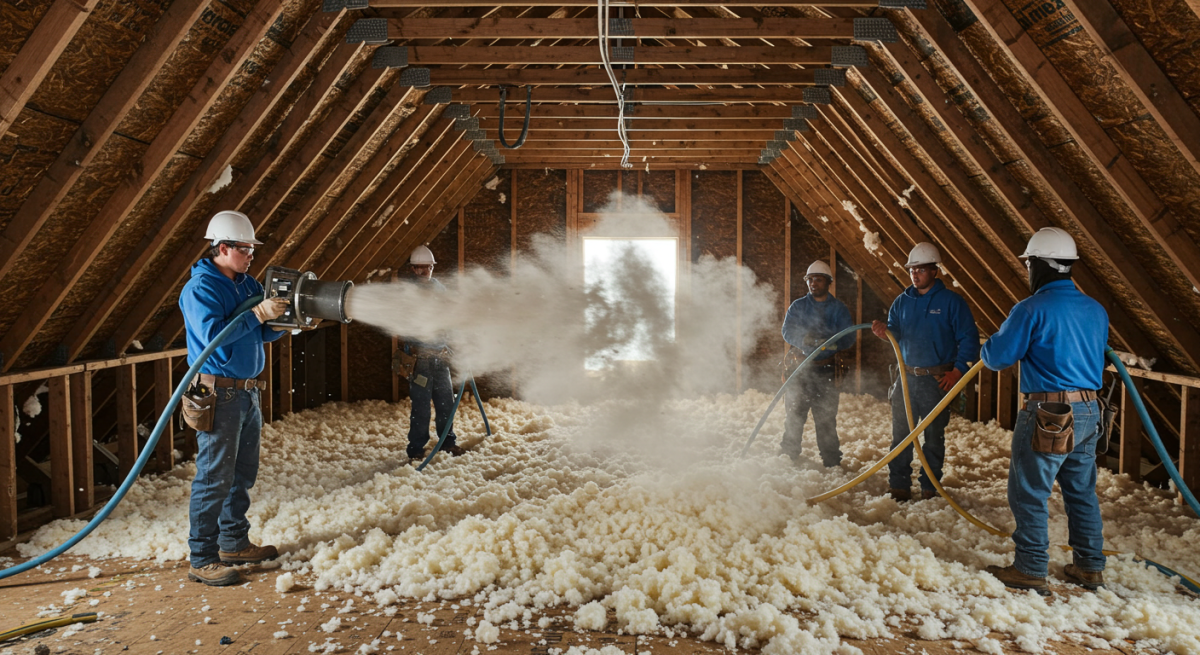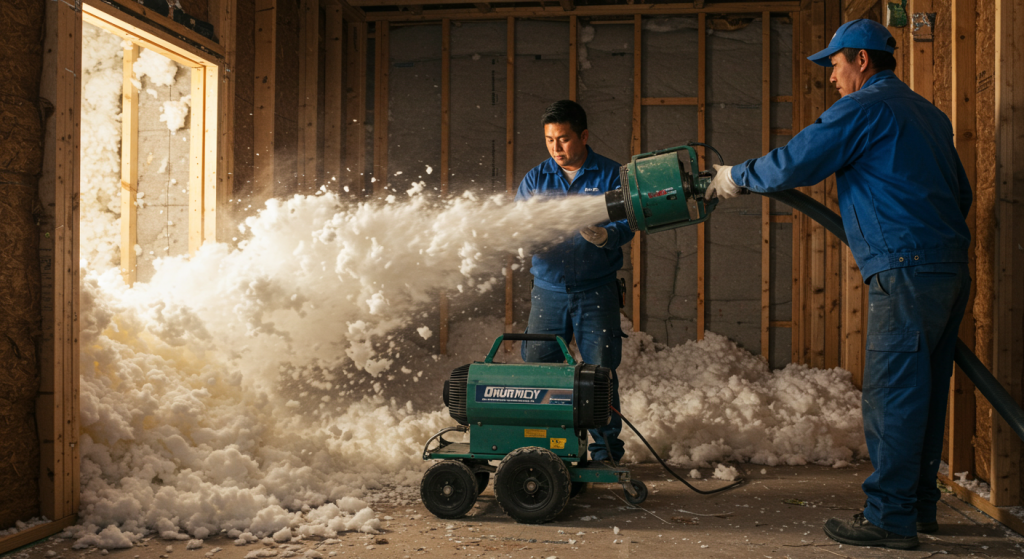When the temperature begins to shift, homeowners often become acutely aware of gaps in comfort and fluctuating energy bills. If you’ve been striving to upgrade your home’s energy efficiency, look no further than blow-in insulation. This innovative insulation method has gained traction among DIY enthusiasts and professionals alike for its ability to enhance home efficiency swiftly and effectively.
Understanding Blow-In Insulation
Blow-in insulation, also referred to as loose-fill insulation, utilizes specialized machines to blow materials like cellulose or fiberglass into walls, attics, and other areas where insulation is needed. Unlike traditional batt insulation, this method allows for excellent coverage, filling every nook and cranny that might otherwise be overlooked.
Key Materials for Blow-In Insulation
Various materials are available for blow-in insulation, each with its unique advantages:
- Cellulose: Often derived from recycled paper, cellulose is not only eco-friendly but also offers superior insulation properties. It’s treated with fire retardants and insect repellents, making it a safe choice for homeowners.
- Fiberglass: Known for its durability, fiberglass insulation is another popular option. It provides exceptional thermal resistance, but may raise concerns for those sensitive to respiratory irritants.
- Rockwool: A less common but highly effective choice, rockwool is celebrated for its fire resistance and soundproofing qualities. It may be ideal for spaces that demand added safety and quiet.
Advantages of Using Blow-In Insulation
Blow-in insulation not only helps regulate indoor temperature but also presents various benefits that improve your home’s efficiency.
Enhanced Energy Effectiveness
The most notable advantage of blow-in insulation is its significant boost to energy savings. By creating a solid thermal barrier, blow-in insulation retains cool air during sweltering summers and prevents valuable warmth from escaping in the winter months. This process results in lower heating and cooling costs, as your HVAC system encounters less strain, maintaining a consistent indoor climate without excessive energy use.
Superior Coverage in Hard-to-Reach Areas
One of the primary reasons blow-in insulation excels is its ability to reach tight and irregular spaces where traditional insulation fails. It flows freely and conforms to various shapes, ensuring that challenging areas like attics and wall cavities receive adequate coverage. In this way, you can rest easy knowing that no area of your home is left vulnerable to drafts and heat loss.
Soundproofing Benefits
In addition to temperature control, blow-in insulation provides soundproofing capabilities. The insulating materials effectively absorb sound waves, creating a quieter living environment. This is not just an aesthetic improvement, but also beneficial for those who live in busier neighborhoods where outside noise levels can be disruptive.
Installation Process of Blow-In Insulation
Understanding the installation process can further illustrate why blow-in insulation is considered a game-changer in home improvement.
Preparation Steps
Before installation can commence, professionals typically take several preparatory steps:
1. Safety Measures: Installers will don protective gear to shield themselves from dust and insulation particles.
2. Access Points: Small holes are drilled in strategic locations, depending on where insulation is being added—either walls, attics, or crawl spaces.
3. Sealing Off Areas: To prevent insulation from escaping into unwanted areas, professionals will seal any gaps around pipes and light fixtures.
Implementation
Using a specialized blower machine, installers will introduce the insulation material into the cavities. This equipment provides controlled and even distribution, filling all gaps efficiently. After completing the desired depth of insulation, access holes are patched and the area is cleaned up.
Long-Term Durability and Environmental Impact
Another compelling reason to consider blow-in insulation lies in its long-term durability. Unlike traditional options, which can sag or deteriorate over time, many blow-in materials, particularly fiberglass and rockwool, maintain their effectiveness. Moreover, cellulose, often made from recycled materials, stands out as an environmentally friendly choice, catering to homeowners who prioritize sustainability in their renovations.
Additionally, the energy savings produced from installing blow-in insulation contribute to a smaller carbon footprint, making it an attractive option for environmentally conscientious homeowners.
Cost-Effectiveness of Blow-In Insulation
While initial installation costs may vary, the long-term savings on energy bills often offset these expenditures. A recently insulated home typically results in significant reductions in annual energy costs, freeing up funds for other home improvement projects or financial goals.
Incorporate blow-in insulation into your next home renovation for a seamless, effective upgrade that enhances both comfort and efficiency. For expertly handled installations, don’t hesitate to consult with professionals from F.B.E. Services LLC.. They can guide you through the process and ensure optimal results.


